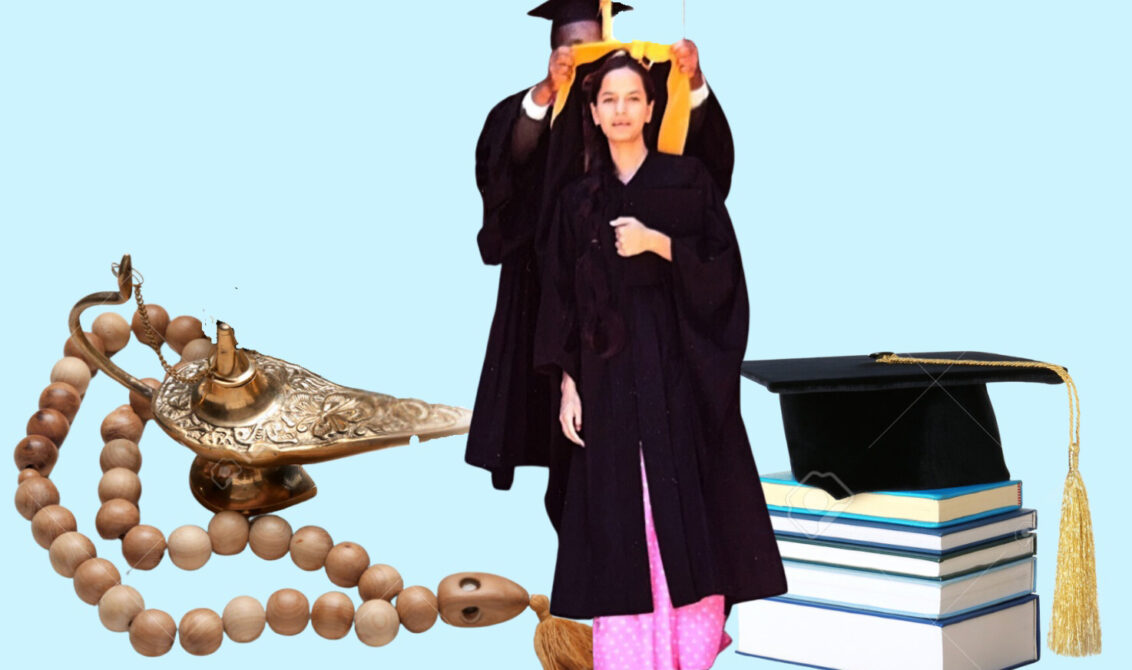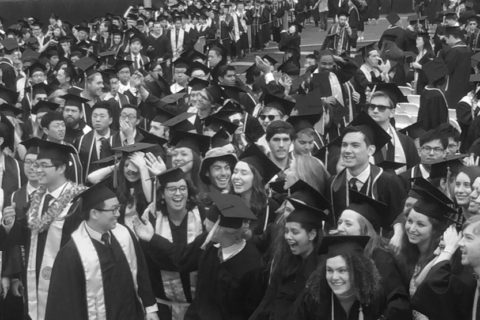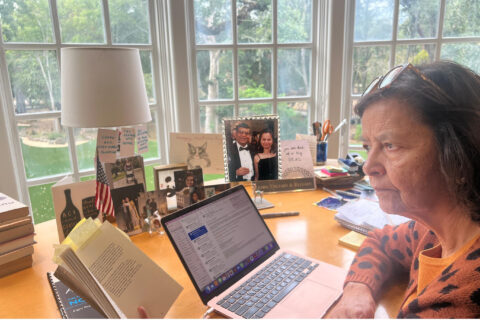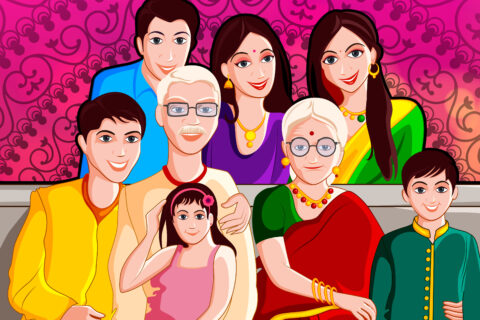
It took me many decades after coming to America to fully realize just how unusual my upbringing was. Not only did it make me a “tweener”—someone living between two cultures (Indian and American)—but it also set me apart within my own extended family in India. In retrospect, I could not have fathomed the huge impact it would have on future Vinita. Today, I can look back and recognize all the influences of my upbringing and how they played roles in helping me succeed and thrive.
Contrasting Family Backgrounds: Westernization vs. Tradition
My mother came from a highly westernized household in India. Her father, my maternal grandfather, was a Chemistry professor who had been honored with the title of Rai Bahadur by the British. He was educated in law in England and represented the pinnacle of sophistication in our family. My father was a brilliant engineer. He came from a more traditional, non-westernized background (back then, the word was “unsophisticated,” belying the latent racism of the Colonial period). My paternal grandfather was a local merchant who never wore a suit or spoke English.
The contrast between my two grandmothers was just as stark. My paternal grandmother was a devout Hindu who would not eat food prepared by servants in the household; instead, she cooked her own meals and prayed every morning, singing hymns. By the time I was born, my paternal grandmother, who had lived a life of modesty and self-reliance, was dependent on my father and his family. This followed the Indian tradition where sons are expected to care for their parents. She spent most part of the year with us.
This was the backdrop of my childhood.
Embracing Spirituality: The Influence of a Guru
When I was six and my older sister was seven, my father, an officer-engineer in government service, became a follower of a Guru—a spiritual leader. This Guru was not educated in English, but he was deeply knowledgeable in Indian scriptures and had many followers in his village and beyond. Although my mother was initially reluctant, she eventually adopted Guru-ji’s teachings as well.
With this strong religious influence, my sister and I were sent to Hindi-medium schools. We did not grow up in a British-style education system. This was in contrast to our English-speaking cousins on my mother’s side. These cousins, who did not pray – every day, saw our family as old-fashioned, perhaps even primitive. While they enjoyed family gatherings and wedding celebrations at my maternal grandparents’ home, we spent our summer vacations in Guru-ji’s ashram in his village. For us, this was our reality. Although I’m sure our relatives found it odd that we missed out on the festivities and treats that grandparents usually lavished on grandchildren.
Life at the ashram was simple, even austere. The followers of Guru-ji did not wear shoes, and their children often ran around in ragged clothes, a stark contrast to the more materially rich lifestyle and aspirations of the town dwellers. We were taught to touch the feet of all of Guru-ji’s followers as a sign of respect, just as our parents did.
Education and Aspiration: Balancing Tradition with Progress
On my mother’s side of the family, every girl was college-educated, though not necessarily expected to work. My mother and her sisters all held college degrees. This was quite unusual for the time. Despite their embrace of Hindu tradition and some of the conservative aspects of Indian culture, my parents had high aspirations for us. They did not hesitate when the two of us (myself and my older sister) got into Roorkee University to pursue expensive engineering degrees. Roorkee was a top-ranked engineering school and was not cheap. They also gave the liberty to my younger sister to be a traditions-breaker to pursue her aspirations. She became a social worker and later served for VA hospitals of America.
My parents even took the bold and financially burdensome step of sending me to the United States for higher education in engineering. This was a leap of faith with no clear path to financial return in India or even in America. If I were to become successful in the U.S., they must have realized, I may not even return home. This is, of course, what came to pass.
The Power of In-Betweenness: Shaping My Perspective and Leadership
Growing up, I found myself straddling two worlds. I didn’t hold traditional views on the differences between educated and uneducated, boys and girls, or English-speaking elites and non-English-speaking traditionalists. I was suspended somewhere between the religious and non-religious Hindu society of those days. We girls dressed conservatively, kept our heads down, and tried to fulfill the expectations placed upon us. We also, thanks in part to our parents and their contrasts, understood that the world was our oyster and we could be more than just housewives, cooking and tending to our husbands.
In fact, this in-betweenness shaped me profoundly. It gave me a unique perspective that I later found invaluable in my career. I learned early on that the world is full of contradictions, and rather than being confused by them, I became adept at navigating them. This ability to bridge gaps—to understand and operate within vastly different cultural contexts—became one of my greatest strengths as a leader. Whether it was leading a company through the complexities of the global telecom industry or negotiating partnerships across borders, my ability to empathize with and understand different perspectives gave me an edge.
Lessons in Resilience, Adaptability, and Leadership
The lessons from my upbringing taught me resilience and adaptability. From my paternal grandmother, who decided to live and died by the holy ganges, I learned the value of discipline, and standing on your own feet. From my maternal side, I inherited a curiosity and openness to the world, an appreciation for d progress. From my time in the ashram, I gained an understanding of spirituality that kept me grounded, no matter how high the stakes became in my professional life. From my parents, I learned how to embrace knowledge and novelty while still holding fast to tradition and not eschewing my past and heritage. My family was a laboratory of in-betweenness that set me up to navigate the uncertainties of the future without losing myself.
Perhaps most importantly, all of these influences also shaped my approach to leadership. I came to believe that true leadership isn’t about fitting neatly into one mold or another; it’s about drawing strength from diverse experiences and perspectives. My family’s mix of religion, education, and fluidity of gender roles gave me the confidence to embrace my unique identity as a “tweener.” It helped me navigate a male-dominated industry without losing my sense of self and gave me the courage to take risks that others might have shied away from. It helped me feel comfortable with being Indian and American at the same time, and sometimes feeling like I belonged to neither identity in full.
The Foundation of Success: Embracing the Role of a Tweener
In retrospect, the very things that once made me feel out of place became the foundation of my success. I learned that being a tweener—straddling different worlds—allowed me to see opportunities where others saw obstacles, to build bridges where others saw divides. And that, more than anything, has been the key to my journey.








Anjali Tehri Dhawan
Wow!!! This put into words how I feel inside for myself. Each one of us in a unique piece and embracing our roots and allowing those roots to feed our future selves is beautiful.
Kiran Malhotra
Vanita eloquent !!
How our identities some inherited some environmental and some epigenetic make us whole !!
purnima
When we move from one culture to another, assuming that both have goods and bads, sometimes we blame our childhood and sometimes we blame our children comparing them with our childhood. Yet, we continue to evolve within ourselves and generation to generation. Keep writing.
Suhas Patil
Vinita, Thank you for sharing your story. Your story will give inspiration to young people who are trying to chart their path in life. The story of being a Tweener is story of may of us including me. Thank you for writing your story a sharing it with us.
Suhas Patil
Sreedhar Menon
Very little if any I can learn!
Vinay Khanna
Vinita,
Very nicely written story of your childhood and the western and the Indian traditional forces which shaped your life.
Enjoyed reading the article
Vinay Khanna
Vinita,
Very nicely written story of your childhood and the western and the Indian traditional forces which shaped your life.
Enjoyed reading it
Deepka
Very impressive, nodding my head on many similarities. Being convent educated and biases we held against who went to Hindi medium schools.
Sunil Suri
Vinita as an observer – I see no signs to any struggle you encountered in straddling two cultures!
It would be interesting to hear from your daughters if they see any negatives as a circumstance of your childhood –
As an Entrepreneur, which you are or have been, you show no wear for the worse given your course of life. You certainly carry the WOW factor. Kudos to all your achievements. We sing praises for them.
VIVEK SHEEL
Vinita, very impressive background and congratulations for your success!!!
Vijay Gupta
Sunil has asked an interesting question: How did the circumstances of your childhood impact your daughters? In my own experience, there are so many influences on our children here that it is hard to know how any one factor impacted them.
In my family, we often say that my son is 80-90% American (culturally speaking) and only 10-20% Indian. OTOH, my daughter is 80-90% Indian and only 10-20% American. Both were born and raised here. And by the same parents!
My daughter can also speak Hindi well enough (and with an Indian accent) that most people in India cannot tell that she is not India-born. The only factor that I can name as a possibly unique influence on her is that she has been learning and practicing classical Hindustani music since early childhood (something which her parents never did).
vinitagupta
One of course tries to shape/influence the off springs. You are right, how much you do is not known. The learnt skills whether like Hindustani music, seeks to find appreciators also.
Thanks, Vijay.